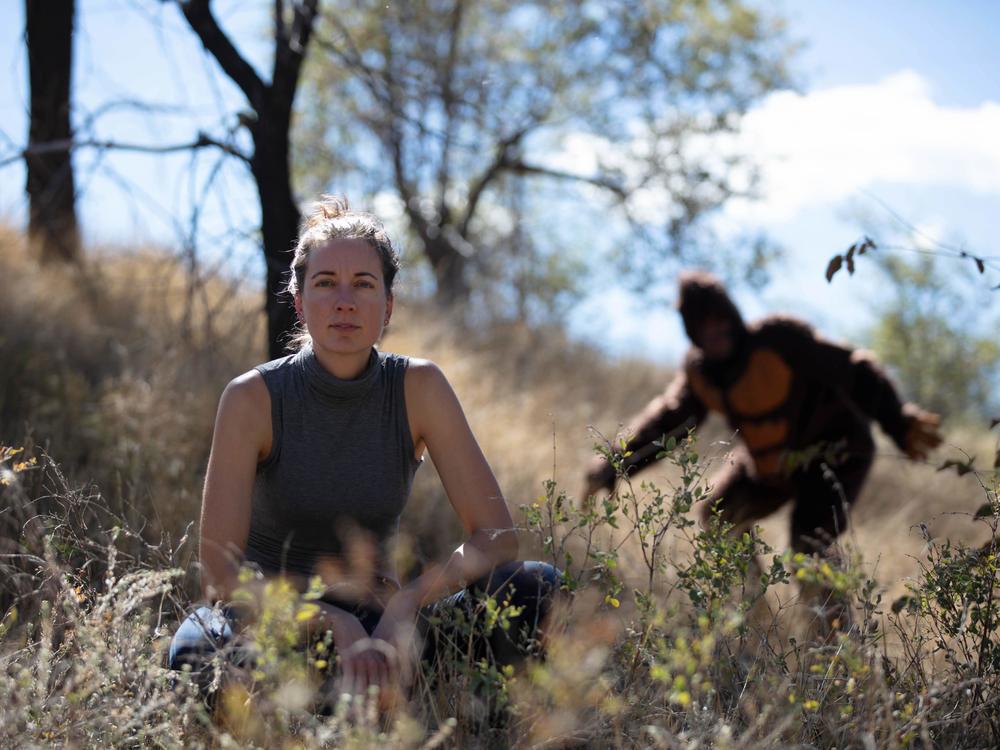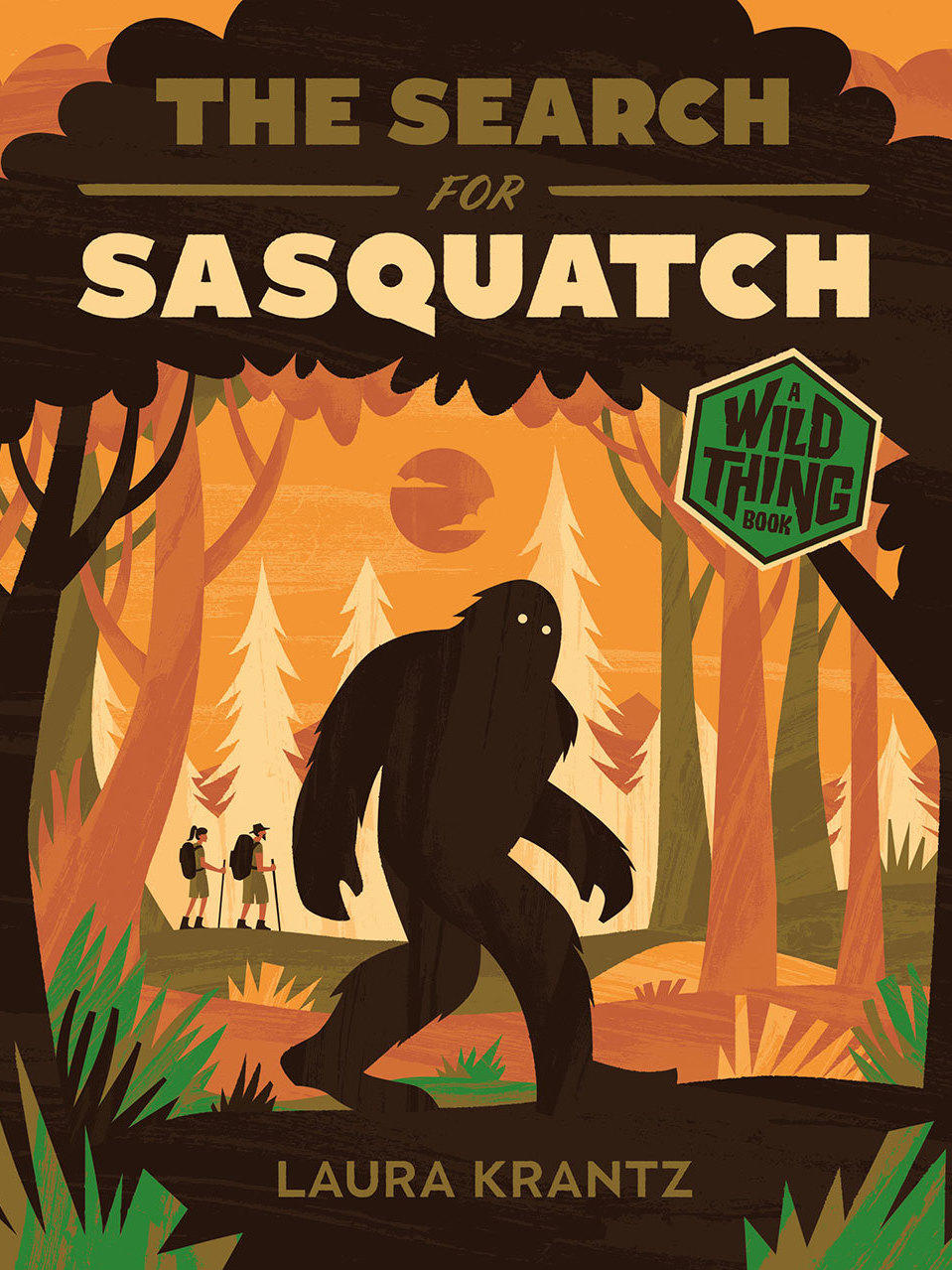Section Branding
Header Content
She wrote a Bigfoot book for kids. It was no small feat
Primary Content
For decades people have grappled with the myth and mystery of Bigfoot, with some seeking their own explanations through grainy video footage, campfire tales and wilderness expeditions.
Journalist Laura Krantz takes a more scientific approach. She's the host of the Wild Thing podcast, which examines the relationship between science and society and its first season focuses entirely on the legendary beast.
Krantz traces her own interest in Sasquatch to the discovery of a long-lost relative: her grandfather's cousin Grover Krantz, an anthropology professor who firmly believed in the existence of Bigfoot — a notable outlier in his profession.
"And so for me, it was sort of this question: How can you hold on to being a scientist and also onto this idea of Bigfoot at the same time?" Krantz recalls. "And that's really what kicked off this exploration. Like, what kind of evidence do we have? What kind of information is out there? Does anything stand up to rigorous scientific exploration and investigation?"
Taking a scientific approach to the Bigfoot myth
Those are some of the questions Krantz sets out to answer in her new book, The Search for Sasquatch, which is aimed at middle-grade readers (between eight and 12 years old) and rooted in the language of science.
Krantz, who used to work for NPR, tells Morning Edition's A Martínez that the book offers an opportunity to take a mythical topic with a lot of lore behind it "and see if there's anything real to it." That means investigating things like, if Bigfoot exists, where it would live on the evolutionary tree (including relative to humans) and what its DNA would look like.
For her research, Krantz traveled to "Sasquatch hot spots" in and beyond the Pacific Northwest, including 10-foot-wide so-called Bigfoot nests in Washington state. She also interviewed wildlife experts and dug into DNA analysis.
"I approach this from the standpoint of: Bigfoot is a flesh and blood creature, the same as anything else on this Earth. It's not magical. It doesn't have superpowers," she adds. "And what I'm kind of hoping to encourage the readers to do, is say, 'OK, this is a really interesting idea. How can we look at this logically? How can we look at this through the lens of science?' "
There could be some logical explanations for even the most magical of Bigfoot's purported traits, Krantz says. For example, some devotees say Bigfoot vanishes — but she doesn't necessarily think that means he can turn invisible. Perhaps he's covered with so many twigs and leaves and hairs that if he stands extremely still, he's impossible to see.
Still, Krantz did hear some anecdotes that she has a harder time rationalizing. She spoke to scientists, wildlife biologists, hunters and avid outdoorspeople who spent lots of time in the woods and were familiar with the environment, yet "had an experience so bizarre that they really couldn't figure out another explanation." One such story made the hair on the back of Krantz's neck stand up when she heard it (she's avoiding spoilers, since it's in the book).
Beyond the question of Bigfoot's existence, Krantz also wants to know why people are so fascinated with the creature. She offers two main takeaways from her reporting.
Why is Bigfoot still a draw for curious minds?
"I think for some people it's the idea that the world is still wild enough and untamed and unpaved and unexplored that something like Bigfoot could be out there," she says. "I think we want that sense of mystery and that feeling that there's still things to find out there, because if we already know everything, then well, what's the fun in that?... I think, too, there's a sort of recognition that we need to preserve these wild spaces. It's almost an environmental mandate, a desire to preserve the sorts of places that Bigfoot could exist in, even if Bigfoot doesn't really exist."
Krantz is hopeful that her book will get readers excited about having outdoor adventures of their own, from going on hikes to exploring nature to trying to "lure a Sasquatch into their own campsite."
And while she believes the intrigue and folklore surrounding Bigfoot will draw young readers into the book, she also hopes its approach will help teach them how to make sense of the deluge of information they deal with in everyday life, whether that's from peers, through news headlines or on social media. In other words: Explore possibilities and ask questions, but stay grounded in the facts.
"Part of this is trying to help kids maybe be a little bit more scientifically literate, be a little bit more critical in their thinking about these kinds of stories and yet still realize that they can have fun with it and want to believe and have a good time with it," Krantz says. "I think the phrase is, be open-minded without your brains falling out."
The audio for this story was produced by Shelby Hawkins and edited by Reena Advani.
Copyright 2022 NPR. To see more, visit https://www.npr.org.


